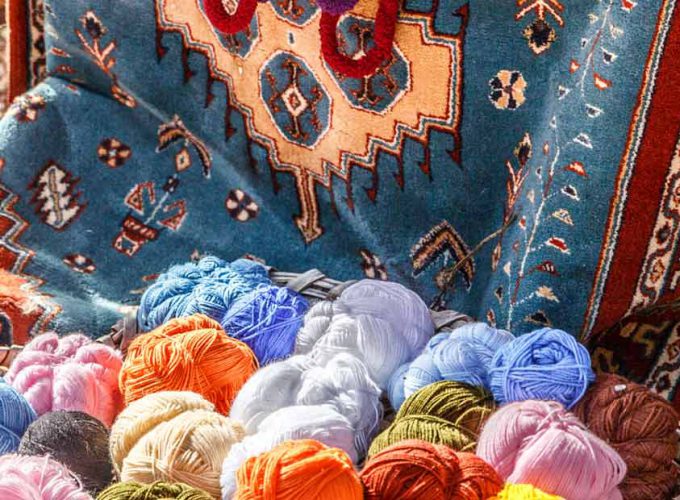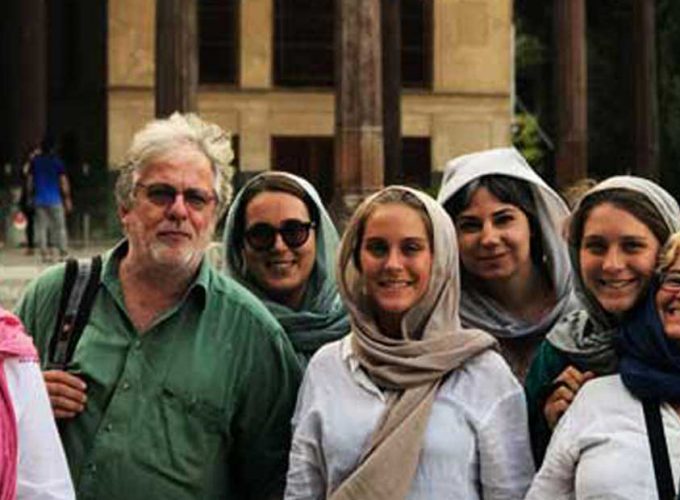You may have heard about glassblowing and think that it’s a hip and modern phenomenon.
But the signs of glassblowing can be found around 2500-3000 BC. Almost all countries and nations around the world have had some exposure to glass making and glassware.
Glass has a rich history in art and industry. It is usually made out of high-quality sand, silica and colorful metal oxides. The very first glasses pieces were either colorless or contained a large amount of impurities. Incredible passion and desire has enabled us to tame the rough glass into a delicate, exquisite work of art. Today, various metal additives are added to glass to give each piece lustrous colors. Blue comes from cobalt oxide, yellow comes from sulfur and red comes from gold chloride, just to name a few.
Science and history
 This medium has been present in different periods of Iran’s history. From the Seljuq dynasty (10th century) were common object like decantours, cups and plates were made for the aristocracy, to the Safavid dynasty (16th century), where the great Shah Abbas popularized artistic glass making along with a whole variety of different lesser-known handicrafts, glassblowing has been an integral part of Iranian expression. Today, colorfully stained, geometric glass windows can be observed in almost all historic and majestic structures and facades.
This medium has been present in different periods of Iran’s history. From the Seljuq dynasty (10th century) were common object like decantours, cups and plates were made for the aristocracy, to the Safavid dynasty (16th century), where the great Shah Abbas popularized artistic glass making along with a whole variety of different lesser-known handicrafts, glassblowing has been an integral part of Iranian expression. Today, colorfully stained, geometric glass windows can be observed in almost all historic and majestic structures and facades.
Watching glass being made by hand is a wonderful experience. The artist will pick up a red hot glowing ball of liquid glass using a blowpipe. The artist will then blow into the pipe, expanding the volume and size of the glass ball. He then has only a limited amount of time to shape the cooling glass as he wishes. The piece is repeatedly cooled and shaped until the final desired form is achieved. Finally, the artist adds his or her unique touch to each piece using various colors, metals and tools.
Modern Shopping
The markets in each city contain a whole list of different practical and decorative glass products. Walking through the bazaars, you may glimpse a few colorful pieces here and there. Here are a few items we recommend if you are looking to buy Iranian glassware:
Hookahs – Hookahs (ghel-yoon in farsi), in some cases known as shishas, are quite common in Iranian culture. Gorgeous and vivid hookah bases can be found in all kinds of shops throughout the city. You can purchase all aspects of the hookah separately or all at once. However, it is the lovely glass base that provides much of the decorative beauty of the hookah. If you are not a smoker, you can even purchase the hookah base as a petite flower pot.
Decanters and vases- Oftentimes, dinner tables require some sort of small to medium sized containers for various fluids such as sauces or even drinks. Sometimes, you may require small containers for precious liquids such as colognes or perfumes. Other times, you may just wish to add a bit of class to any decor. Whatever use you may have in mind, you can find amongst the slenderly crafted decanters and vases of Tehran.
Stained Glass – Iranians are famous for their geometric stained glass windows. Made up of hand cut pieces of colored glass and wood, these mosaics of color show their true brilliance when placed next to a source of life. Windows, doors and other entrances were traditionally made using these patterns. Today, everything from night lamps, fridge magnets and even sculptures are made using this ancient technique.










This is really useful, thanks.
This is actually useful, thanks.